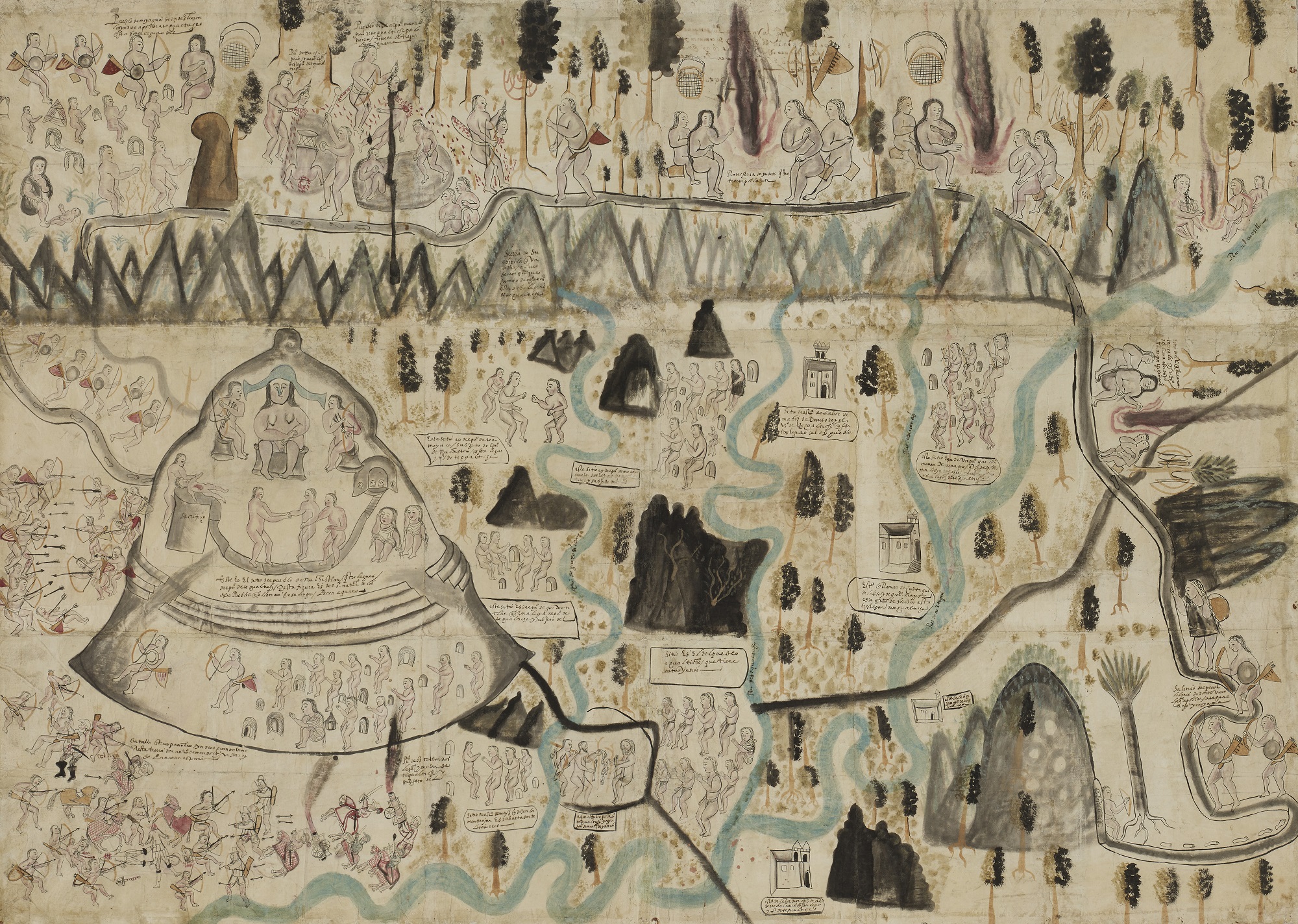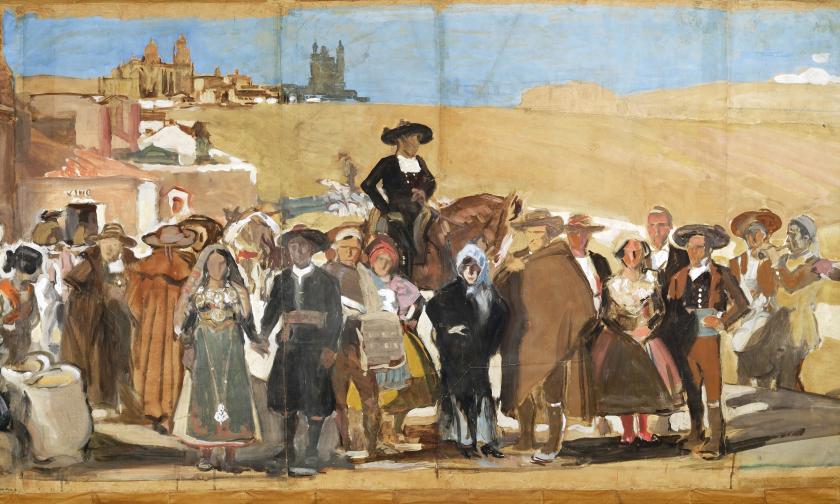Treasures from the Hispanic Society Museum & Library are displayed as a monumental survey of Spanish art from Antiquity to the 20th century. The new exhibition stands as testament to the extraordinary vision of its founder, Archer M Huntington.
Son of the American industrialist and railroad magnate Collis P Huntington, Archer accompanied his parents’ trips to the continent, finding sanctuary in European museums from the age of 12. He wrote of his visit to the Louvre in 1882, "I knew nothing about pictures, but I knew instinctively that I was in a new world." His interest soon outgrew just pictures, and would lead to the assembly of 150 Spanish-themed objects of metal work, maps, sculptures, and paintings now on display in the Royal Academy’s main gallery.
His founding of the Hispanic Society in 1904 satisfied a personal desire to amass an important collection. It also demonstrated his alignment and understanding of Spanish culture at a time when the average American held European art in contempt. Archer wasn’t swayed by this disdain and pursued his idealised views of Spain as an ode to the country. His growing collection was curbed by the outbreak of the First World War; a 10th century ivory box from Cordoba and a world map of 1526 by Juan Vespucci were his last acquisitions. The map signals the dawn of the Age of Exploration and the beginning of Hispanic culture. As the final piece of Archer’s puzzle it stands to unify the collection. All works on display can relate to this one image, their journeys charted and their origins discovered.
The Italian explorer Amerigo Vespucci travelled to the New World on behalf of Spain in 1499, reaching the coast of Venezuela. In a room dedicated to the colonial art of Latin America, Vespucci’s incomplete map of the world stretches across a wall. Its uneven texture mimics the topographical lines of a walker’s guide and with it, contains the world on a single sheet. The caste paintings of Juan Rodríguez Juárez on the adjoining walls offer a stark reality to the expansion of Europe and the fashionable obsession with racial purity and charting. The exhibition also offers explicit confluences of Spanish and South American practice (pictured above: Map of Tequaltiche, 1584). Paintings from the Cusco school reimagine Christian imagery through ornate local fabrics, and present these works in engraved frames with pearl inlay. In the same room, an image by Nicolás de Correa depicts the Wedding at Cana as an enconchado, an oil painting inlaid with iridescent mother-of-pearl. This method emerged in Mexico during the 17th century and carried luxury status.
The exhibition also offers explicit confluences of Spanish and South American practice (pictured above: Map of Tequaltiche, 1584). Paintings from the Cusco school reimagine Christian imagery through ornate local fabrics, and present these works in engraved frames with pearl inlay. In the same room, an image by Nicolás de Correa depicts the Wedding at Cana as an enconchado, an oil painting inlaid with iridescent mother-of-pearl. This method emerged in Mexico during the 17th century and carried luxury status.
The vision of the Hispanic Society culminates in an ambitious work, a sketch for which is shown in the last room (main picture). In 1911 Archer Huntingdon commissioned the prized Spanish painter Joaquín Sorolla to decorate a room at the Hispanic Society. The resulting 14 murals came to be known as the Vision of Spain, 1911-1919; a layered townscape depicting regional cultures through figures, costumes and traditions. Sorolla used gouache paint and large, kraft paper spools that could be unfurled to any length; in fact, his grand vision reached its limit, exceeding the space available. He had originally hoped to include the regions of Mallorca, the Canaries, Africa, and Portugal. This expressionist blueprint reads like a novella of Huntington and Sorolla’s single vision of Spain. Sadly, Sorolla died before the series could be installed in 1926.
In the same year Sorolla produced a vast portrait of Louis Comfort Tiffany, the glass maker and first design director of his father’s company. Painted in the grounds of his Long Island estate, Tiffany is the true artist at work, complete with red paint stains down his trouser leg. Shown in his summer linens with a Gatsby quantity of pastel flowers, Sorolla’s chocolate box hides a mastery of colour and tone. With the exception of the cuff, every white is mixed with another colour. This balance of pigment is irresistible and demands closer looking, a steady thrum of texture and colour.
The Hispanic Society of America is set to reopen in New York later this year with an exhibition dedicated to the work of Goya.










![SEX MONEY RACE RELIGION [2016] by Gilbert and George. Installation shot of Gilbert & George 21ST CENTURY PICTURES Hayward Gallery](/sites/default/files/styles/thumbnail_125_x_125_/public/mastimages/Gilbert%20%26%20George_%2021ST%20CENTURY%20PICTURES.%20SEX%20MONEY%20RACE%20RELIGION%20%5B2016%5D.%20Photo_%20Mark%20Blower.%20Courtesy%20of%20the%20Gilbert%20%26%20George%20and%20the%20Hayward%20Gallery._0.jpg?itok=3oW-Y84i)




Add comment